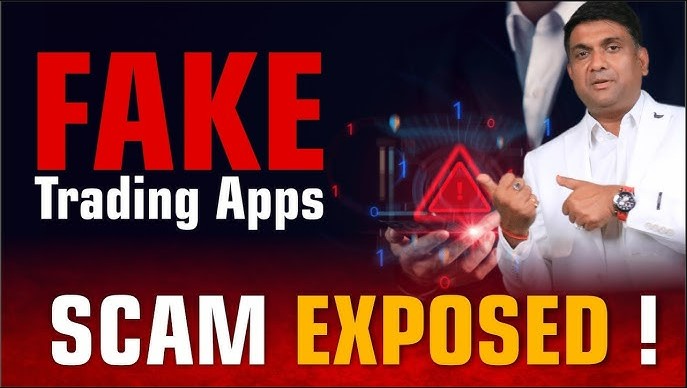Safinogr.com Scam Review: -Key Problems and Risk Signals
In the online investment space, slick websites and confident marketing copy are easy to build — true credibility is not. Safinogr.com is one of those platforms that has surfaced with a professional look and an investment pitch that sounds attractive on the surface. But when you dig into ownership, user reports, regulatory footprint, and technical signals, several worrying patterns emerge. This review unpacks those signals, summarizes the main red flags, and explains why many analysts treat this site as high-risk.
Note: this article analyzes transparency, behaviour and risk indicators only. It does not provide recovery advice or links to external support.
1) First impressions: polished presentation, thin substantiation
Safinogr.com opens with glossy marketing: bold claims about returns, short product blurbs, and calls to “join now.” That kind of presentation is designed to build trust fast. But design is cheap; substance is the true test. When a site leans heavily on visuals and vague promises while offering little verifiable corporate detail, it should immediately raise suspicion. Multiple community threads and user-report aggregators have flagged Safinogr and closely named variants as potentially problematic.
2) Company transparency and ownership — intentionally opaque
One of the most consistent red flags is the lack of clear, verifiable company data. Legitimate financial firms typically publish a registered company name, physical address, licensing information and ways to verify identity. Safinogr.com, like several sites in its niche, uses privacy-protected domain registration and provides minimal corporate disclosure — a pattern that makes accountability difficult. Independent scam watchlists include Safinogr in their registries of suspicious investment sites, which is a notable negative signal.
3) Reputation and user feedback — many complaints, few verifiable successes
Across forums and review aggregators you’ll find a cluster of concerns rather than a cluster of satisfied users. Threads on community boards discuss the site’s promises and ask whether withdrawals actually succeed; aggregated complaint pages show users reporting missing payouts and poor communication. While not every complaint proves fraud, the volume and consistency of negative reports about deposit/withdrawal patterns align with many known scam behaviours.
4) Regulatory footprint — no clear, credible licences shown
A major safety checkpoint for any financial service is whether it’s licensed by recognized regulators. For Safinogr.com, there is no prominent, verifiable display of licences from top-tier regulators. Independent safety evaluators and broker-watch sites place Safino-branded operations in low-trust categories and warn visitors to exercise caution when a site claims investment functionality but lacks regulatory disclosure. The absence of verifiable licensing increases the risk profile substantially.
5) Marketing tactics — urgency, guarantees and “too-good-to-be-true” language
Safinogr’s promotional language — like many suspect operators — emphasizes quick gains, exclusive access and limited-time opportunities. Phrases promising unusually high or guaranteed returns appear in a way designed to shorten the decision curve and reduce the incentive for due diligence. When aggressive urgency is paired with opaque disclosures, the combination is a classic recruitment funnel used by high-risk sites.
6) Dashboard illusions and simulated activity
A common tactic among fraudulent investment platforms is to show simulated dashboards with fabricated balances or “paper profits.” Several reviewers and forum participants describe seeing attractive dashboard numbers that encourage reinvestment — until a withdrawal attempt is made and problems appear. The presence of convincing but unverifiable dashboards is therefore a strong behavioural red flag that should make readers skeptical.
7) Payment rails and reversibility — crypto and opaque transfers favored
High-risk operators frequently prefer payment methods that are hard or impossible to reverse (cryptocurrency transfers, certain wire paths, or e-wallets with weak buyer protections). While I cannot list the platform’s exact accepted methods here, community reports for similar brands often note encouragement toward irreversible transfers. That structural choice protects the operator and leaves payers with little recourse if funds disappear.
8) Review aggregator and watchdog signals — multiple negative listings
Independent watchdogs and scam-report pages list Safinogr (and related Safino-branded sites) among suspicious or questionable investment companies. These lists are not definitive proof of criminality, but they aggregate multiple signals — domain opacity, user complaints, unverified claims — and assign a negative trust posture. When several independent checkers converge on “suspicious,” the combined signal is stronger than any single anecdote.
9) Fake social proof and manufactured testimonials
Another recurring tactic is seeding overly positive testimonials that lack verifiable detail. Fake reviews will typically use vague praise, no real timestamps, and sometimes recycled text across multiple sites. In contrast, credible testimonial ecosystems include verifiable transaction IDs, time-stamped screenshots, or public profiles that can be cross-checked. For Safinogr, independent reviewers have pointed out suspiciously uniform praise on the vendor site versus a predominance of complaints elsewhere — a classic mismatch that should alarm readers.
10) Domain behaviour and lifecycle — short history, privacy protection
Short domain lifespans and privacy-protected WHOIS records are not in themselves proof of wrongdoing; many legitimate businesses use privacy services. But this technical posture, combined with negative reviews and watchdog listings, suggests a setup designed to be hard to trace and easy to drop and rebrand when complaints mount. Several scam-watch lists flag similar domains for their transient lifecycle and anonymous registration.
11) Typical user journey that raises alarms (pattern, not instruction)
Reports that cluster around Safinogr-style sites often follow the same path: attractive marketing leads to a small initial deposit → the dashboard shows early “gains” → an account manager encourages larger deposits → withdrawal attempts encounter delays or new conditions → communications deteriorate. That predictable sequence is the hallmark of many advance-deposit or Ponzi-style operations. Observing the pattern is useful for recognition — not a guarantee that every case is identical, but a warning sign when several boxes are ticked.
12) Are there any potentially legitimate readings? (fair-minded look)
To be balanced: some promotional posts and automated scanners highlight that the website is technically functional (HTTPS, responsive pages) and that a small number of people post positive anecdotes. Technical functionality alone does not equal trust, and isolated positive testimonials may be genuine, paid, or fake. Given the preponderance of opaque ownership, aggregated complaints, and watchdog listings, the safer interpretation remains that the overall profile is high-risk.
13) Key red flags — compact checklist
-
Hidden or privacy-protected ownership and limited corporate disclosure.
-
Multiple community threads and complaint pages discussing withdrawal or trust issues.
-
No clear, verifiable licensing from recognized financial regulators.
-
Heavy use of urgency, guaranteed-return language, and promotional pressure.
-
Mismatch between glowing on-site testimonials and independent negative reports.
14) Final verdict — summary assessment
Putting the evidence together, Safinogr.com displays multiple hallmark signs of an untrustworthy or potentially fraudulent investment operation: opaque ownership, reported difficulties from users, negative listings on scam-watch aggregators, and marketing that emphasises urgency and outsized returns. While not every complaint proves criminal intent, the weight of aggregated signals makes this a high-risk platform that most investors should treat with extreme caution.
Report Safinogr.com Scam and Recover Your Funds
If you have lost money to Safinogr.com Scam, it’s important to take action immediately. Report the scam to Jayen-consulting.com, a trusted platform that assists victims in recovering their stolen funds. The sooner you act, the better your chances of reclaiming your money and holding these fraudsters accountable.
Scam brokers like Safinogr.com continue to target unsuspecting investors. Stay informed, avoid unregulated platforms, and report scams to protect yourself and others from financial fraud.
Stay smart. Stay safe.






